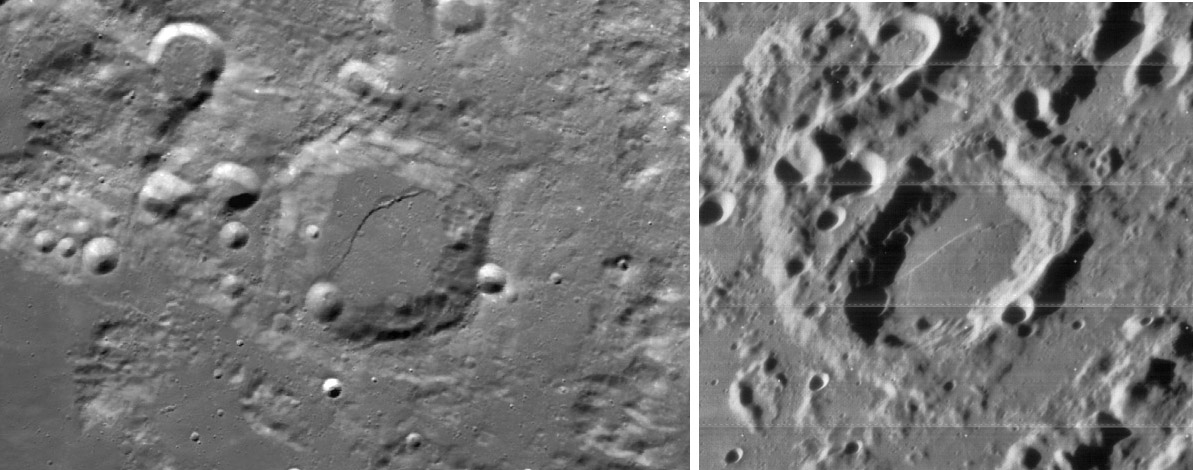left image from Clementine viaMap-A-Planet and right from Lunar Orbiter 4-165 H1 viaLunar Orbiter Digitization Project
While researching Clementine images for yesterday’s LPOD on Casanus and Petermann I noticed a feature I had never seen before. The crater Hayn A, on the northwestern edge of the Humboltianum Basin, is a 54 km wide older crater whose floor is covered by smooth plains material. The surprising feature is a gently curved dark line that crosses the floor. The illumination is from the bottom-right and the cast shadow indicates that the right side of the crater floor is higher than the left side. This feature is a fault with movement up on the right. This is confirmed by the Lunar Orbiter IV image acquired with opposite lighting, which reveals the curved line to be bright, indicating a raised scarp facing the Sun. There are only a handful of faults on the Moon so it is surprising that this one has apparently not been described before. Also of interest are two elongated bumps occurring on the northern end of the fault. These do not look like volcanic extrusions erupted up the fault, but I don’t know how they formed otherwise, perhaps they are rocks that were folded up by a horizontal component of faulting. The Lunar Orbiter image hints that a small fault branches off the southern end of the main one, but there is absolutely no evidence for that on the higher Sun Clementine view. Why is this large fault here? It parallels the rim of the Humboldtianum Basin that it is within, but if it were related to that I would expect the faulting to extend beyond the crater floor. Most likely is that it is due to slight uplift within Hayn A. The fault is much sharper and fresher looking than the other parts of the crater and probably is much younger than the crater and its smooth floor. Perhaps the mare material that flooded nearby Humboldtianum rose under Hayn A and lifted up and ruptured its floor. This would then be an early stage of a floor-fractured crater.
Related Links:
Rükl chart 6
Yesterday's LPOD: Profile in Confusion
Tomorrow's LPOD: Waves of Rings




